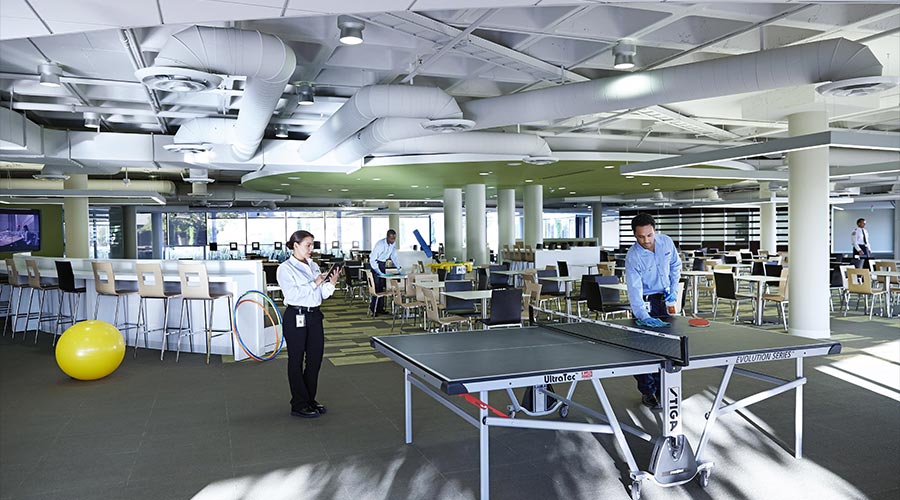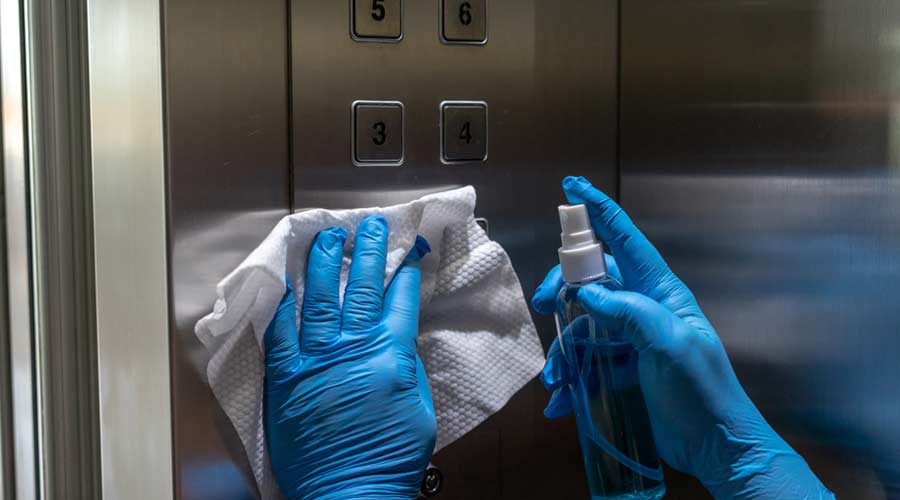
By Kayla Oliver, Head of Product, Partnerships, and Innovation, ABM
As companies continue navigating return-to-office strategies, it's essential to consider how the in-office experience can make a critical difference. That experience includes the cleanliness, air quality, temperature, and more that previously were behind-the-scenes and are now front-and-center.
Research from WTW shows that nearly two-thirds of US companies (61 percent) now have a formal policy requiring employees to be in the office for a minimum number of days each week. With these trends on the rise, it's crucial to explore how companies can ensure an optimal experience supporting the transition back to in-office work and boost engagement.
By establishing a strategy concentrated on location, logistics and rebuilding trust, companies can stay ahead of potential bottlenecks and create a safe and comfortable working environment. It’s increasingly important that companies create spaces that enhance employee well-being. There are a few simple ways to make the return-to-office process seamless while ensuring employees feel valued.
For example, proactive solutions like upgrading air quality systems, optimizing layouts to foster collaboration and flexibility and implementing sustainable designs that align with employee and societal values can lead to a healthier workplace. This can help employees adapt to changes within the office setting, too. Leaders who prioritize clear communication, genuine appreciation and authentic engagement can make employees feel appreciated. Finding the perfect balance between business needs and employee expectations is essential.
While a poorly executed strategy can drive higher turnover, reduce productivity, and leave expensive office space underutilized, forward-thinking companies and workplace operators can use data and sensor technology to positively impact workplace culture. Through leveraging these technologies, companies can ensure health protocols are followed and provide peace of mind for their employees.
For example, in a case study, a client in an owner-occupied space wanted to evaluate how to bring more employees into the office. ABM implemented a sensor-based solution that brought visibility into the servicing of their building, providing more transparency and trust. Displays were installed outside conference rooms, desk clusters and restrooms to show the last time spaces were cleaned. Occupancy information was also used to direct day-porter activity, ensuring that spaces were serviced before becoming visibly dirty.
As a result, employees who came into the office infrequently greatly appreciated the increased visibility, and employees observed more consistently clean spaces during the day, making them more comfortable using the restrooms and conference rooms.
The return-to-office push can be a valuable tool to help companies and staff continue to grow and meet business goals, whether it’s to foster camaraderie and collaboration or to help boost morale. With these tips in mind, any company or organization can put its best foot forward and usher in a new way to make their staff feel valued and supported.
Kayla Oliver is head of product, partnerships, and innovation at ABM. Prior to joining ABM, she was a financial services organization (FSO) business advisory senior consultant at EY. Oliver is a candidate for an Executive Master of Business Administration (EMBA) at The Wharton School. She earned a Bachelor of Arts in molecular biology and economics from Colgate University.
posted on 4/29/2025

 The Down and Dirty on Cleaning in Virus Season
The Down and Dirty on Cleaning in Virus Season How Surfactant Use is Expanding in Commercial Cleaning
How Surfactant Use is Expanding in Commercial Cleaning Maximize Your Margins: Learn How to Automate Pricing and Track Rebates
Maximize Your Margins: Learn How to Automate Pricing and Track Rebates